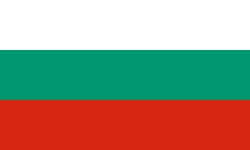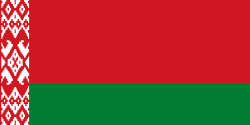Paul Edward Anderson
| Paul Edward Anderson | |
|---|---|
 | |
| Narození | 17. října 1932 Toccoa |
| Úmrtí | 15. srpna 1994 (ve věku 61 let) Vidalia |
| Příčina úmrtí | nefritida |
| Povolání | vzpěrač a powerlifter |
| Některá data mohou pocházet z datové položky. | |
| Přehled medailí | ||
|---|---|---|
| zlato | LOH 1956 | těžká váha |
| Mistrovství světa ve vzpírání | ||
| zlato | MS 1955 | těžká váha |
Paul Edward Anderson (17. října 1932, Toccoa, Georgie, USA — 15. srpna 1994, Vidalia, Georgie, USA) byl americký vzpěrač, vítěz kategorie nad 90 kg na olympiádě 1956. Měřil 177 cm, vážil okolo 160 kg.[1]
Stal se dvojnásobným mistrem USA a mistrem světa z roku 1955. V červenci 1955 vzepřel na mítinku v Moskvě před dvanácti tisíci diváky v trojboji 518 kg (není uznáváno jako světový rekord, protože nebylo dosaženo na MS nebo OH).[2] Na olympiádě v Melbourne porazil Humberta Selvettiho z Argentiny; oba dosáhli v trojboji výkonu 500 kg, o Andersonově zlaté medaili rozhodla nižší tělesná váha.[3] Byl tak dosud poslední Američan, který vyhrál na olympiádě nejtěžší vzpěračskou kategorii. Po olympiádě se živil na exhibicích jako profesionální silák.
Paul Anderson také pěstoval silový trojboj. Jeho rekord v dřepu byl 540 kg. Guinnessova kniha rekordů uvedla, že zvedl 2840 kg v backliftu (tj. váha, kterou mu naložili na záda), ale tento výkon byl později zpochybněn.[4]
Byl věřící křesťan, věnoval se charitě. V roce 1961 založil projekt Paul Anderson Youth Home, pomáhající problémové mládeži začlenit se do normálního života.[5]
Zemřel na nedostatečnou funkci ledvin, kterou trpěl od dětství.
Rekordy
- Tah: 185.5 kg
- Trh: 150.25 kg
- Nadhoz: 190.95 kg
Reference
- ↑ http://samson-power.com/ASL/anderson.html
- ↑ Archivovaná kopie. powerlifting.in.ua [online]. [cit. 2013-11-24]. Dostupné v archivu pořízeném z originálu dne 2013-12-03.
- ↑ Archivovaná kopie. www.lifttilyadie.com [online]. [cit. 2013-11-24]. Dostupné v archivu pořízeném z originálu dne 2014-09-03.
- ↑ http://georgiainfo.galileo.usg.edu/paulanderson.htm
- ↑ http://www.payh.org/
Externí odkazy
 Obrázky, zvuky či videa k tématu Paul Edward Anderson na Wikimedia Commons
Obrázky, zvuky či videa k tématu Paul Edward Anderson na Wikimedia Commons - Paul Edward Anderson v databázi Olympedia (anglicky)
- http://www.paulandersonpark.com/
Média použitá na této stránce
Olympic Rings without "rims" (gaps between the rings), As used, eg. in the logos of the 2008 and 2016 Olympics. The colour scheme applied here was specified in 2023 guidelines.
Olympic Rings without "rims" (gaps between the rings), As used, eg. in the logos of the 2008 and 2016 Olympics. The colour scheme applied here was specified in 2023 guidelines.
Autor: F l a n k e r, Licence: CC BY-SA 2.5
Flag of the Kingdom of Sardinia (1851-1861) and of the Kingdom of Italy (1861-1946). Use: Civil flag and ensign. In a governmental or a military context, the crowned version (see Crowned version) was always used (as State flag and naval ensign).
Autor: F l a n k e r, Licence: CC BY-SA 2.5
Flag of the Kingdom of Sardinia (1851-1861) and of the Kingdom of Italy (1861-1946). Use: Civil flag and ensign. In a governmental or a military context, the crowned version (see Crowned version) was always used (as State flag and naval ensign).
Flag of Germany with a 3:2 ratio, instead of 3:5. The 3:2 version was used by the German Confederation and the Weimar Republic. See Flags of the World for more information.
Vlajka České republiky. Podoba státní vlajky České republiky je definována zákonem České národní rady č. 3/1993 Sb., o státních symbolech České republiky, přijatým 17. prosince 1992 a který nabyl účinnosti 1. ledna 1993, kdy rozdělením České a Slovenské Federativní republiky vznikla samostatná Česká republika. Vlajka je popsána v § 4 takto: „Státní vlajka České republiky se skládá z horního pruhu bílého a dolního pruhu červeného, mezi něž je vsunut žerďový modrý klín do poloviny délky vlajky. Poměr šířky k její délce je 2 : 3.“
Vlajka České republiky. Podoba státní vlajky České republiky je definována zákonem České národní rady č. 3/1993 Sb., o státních symbolech České republiky, přijatým 17. prosince 1992 a který nabyl účinnosti 1. ledna 1993, kdy rozdělením České a Slovenské Federativní republiky vznikla samostatná Česká republika. Vlajka je popsána v § 4 takto: „Státní vlajka České republiky se skládá z horního pruhu bílého a dolního pruhu červeného, mezi něž je vsunut žerďový modrý klín do poloviny délky vlajky. Poměr šířky k její délce je 2 : 3.“
National flag and merchant ensign of Germany from 1933 to 1935.
National flag and merchant ensign of Germany from 1933 to 1935.
US Flag with 48 stars. In use for 47 years from July 4, 1912, to July 3, 1959.
(c) I, Cmapm, CC BY-SA 3.0
The flag of the Soviet Union (1955-1991) using a darker shade of red.

(c) I, Cmapm, CC BY-SA 3.0
The flag of the Soviet Union (1955-1991) using a darker shade of red.

Flag of Iran. The tricolor flag was introduced in 1906, but after the Islamic Revolution of 1979 the Arabic words 'Allahu akbar' ('God is great'), written in the Kufic script of the Qur'an and repeated 22 times, were added to the red and green strips where they border the white central strip and in the middle is the emblem of Iran (which is a stylized Persian alphabet of the Arabic word Allah ("God")).
The official ISIRI standard (translation at FotW) gives two slightly different methods of construction for the flag: a compass-and-straightedge construction used for File:Flag of Iran (official).svg, and a "simplified" construction sheet with rational numbers used for this file.
Flag of Belarus 1995-2012
Autor: Dragovit (of the collage), Licence: CC BY-SA 4.0
Both national flags of Austro-Hungary, the collage of flags of the Cisleithania (Habsburg Monarchy) and the Transleithania (Kingdom of Hungary)
Flag of the Germans(1866-1871)
Flag of the Germans(1866-1871)
Flag of Canada introduced in 1965, using Pantone colors. This design replaced the Canadian Red Ensign design.
Paul Anderson durante un esercizio di squat con..... una ruota di carro
Flag of Germany with a 3:2 ratio, instead of 3:5. The 3:2 version was used by the German Confederation and the Weimar Republic. See Flags of the World for more information.































